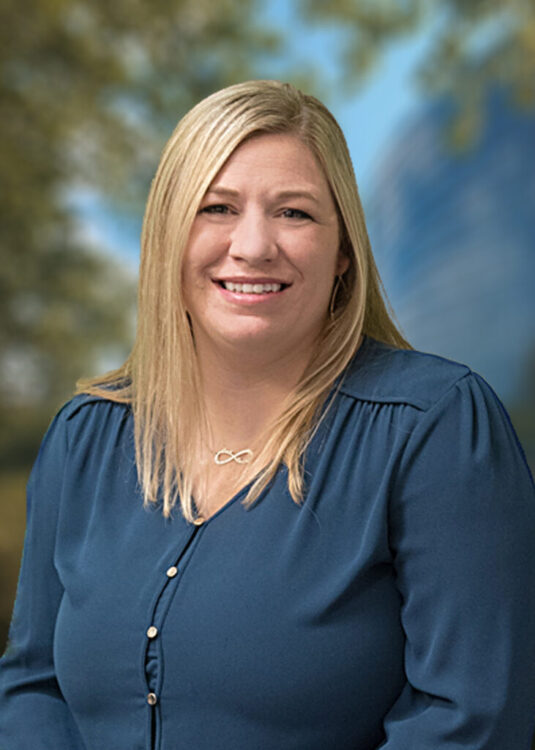Positioning Your Business for the New Normal
Considerations and Strategies to Help Businesses Navigate Short-Term Decisions for Long-Term Success
If the past two months of the coronavirus pandemic have taught us anything, it’s that our businesses need to be positioned for quick maneuvers and redirects in terms of products, supplies, labor, and overall financial strategy. Adams Brown’s recent webinar, held on May 6, 2020, helped small business owners and partners understand the current economic environment and how to adapt their businesses for what comes next.
The Importance of Internal Controls and Compliance, Post-Coronavirus
Internal controls are vital to any business. Making sure that key processes are documented is integral to managing the business and being able to effectively make changes and adapt as the external situation changes. There are five main areas of internal controls to focus on:
- Accounts Receivable,
- Accounts Payable,
- Payroll,
- Bank Reconciliation
- Month/Year-End Close.
According to a webinar poll, about two-thirds of participants have their internal control processes well-documented. Why is this important? They explained that effective internal controls help to mitigate the likelihood of theft, fraud, and lost revenue. According to the Association of Certified Fraud Examiners, a small business stands to lose on average between $125,000 and $150,000 for a single fraud case.
Fraud is expected to increase as the recovery from coronavirus is just getting started. People have lost their jobs, perhaps had salaries or wages reduced, and many individuals are experiencing some level of financial stress. On top of that, work situations have changed, and more people than ever before are working from home. The larger business environment, combined with financial uncertainty, is why small businesses need to make sure their internal controls are in place and functioning properly.
One way to improve internal control processes is to streamline accounting systems with online, cloud-based platforms. QuickBooks online is an excellent solution that lets managers see financial data in real-time, on any device. Accessing other online apps and tech platforms like bill.com or Lockbox makes it easier to reduce time lags, errors, miscommunication, and the likelihood of fraud. Utilizing online accounting systems also enables businesses to collect money sooner and faster.
Online accounting processes are also beneficial when documenting PPP and/or EIDL funding. While there isn’t any final guidance on what needs to be documented, or how, the rule of thumb is to over-document, and not wait until the end of the eight-week period to get everything together. Online reporting and easy access to information are helpful when it comes time to submit documentation for loan forgiveness.
Considering documentation and internal controls, they encouraged webinar participants to try to learn from the coronavirus pandemic. There has been a substantial shift in business and it’s important to develop plans as things change. Now is an excellent time to review vendors and insurance contracts to see what worked well and what didn’t. Which vendors helped the business succeed? Which ones were responsive? How did insurance policies factor in?
Whatever changes need to be made to ensure business continuity in the next pandemic, natural disaster, or technology compromise, make them now. Review vendor lists and make sure you’re operating with the correct companies to make your business successful. The goal is to ensure future business interruption doesn’t occur again and that the business is poised and ready for whatever comes next.
Cash Flow Planning and Strategy
Up-to-date financial data that helps business owners and managers understand cash flow is important to successfully managing any business and even more so in times of significant disruption. Cash flow, Michelle explained, can be simply explained by looking at cash received minus cash paid out, from one period to the next. Owners and managers should know where the cash came from, whether it was operations, a one-time boost due to PPP funding, or another source, and where the cash went.
One suggestion she had was to allocate cash to larger categories to better understand the bigger picture. Michelle cautioned against getting caught up in the details of cash flow planning, and instead try looking at cash flow on a month-to-month basis to understand one period from the next.
Another point she made was to recognize cash flow positive from cash flow negative. In the short-term, look at performance through March and April. Is cash flow expected to rebound in the next few months? Projecting it out to see how long these periods last, factoring in slower collections, allows owners and managers to plan for revenue. It’s best to project different scenarios.
The next area to consider is how PPP and EIDL funds will play into cash flow strategies. Most businesses that took the funding essentially got a short-term period to evaluate decisions and next steps. Businesses that didn’t take the funding were already taking swift actions to shore up funding sources and make payroll. For businesses that did take PPP and/or EIDL funds, borrowers will need to be looking at how best to spend the money. For some businesses, it may be a better solution to use the funds as loans to account for revenue shortages, rather than making payroll.
Post-coronavirus, part of cash flow planning will involve determining whether the cash flow is deferred or simply lost. Medical providers, for example, are more likely to experience deferred revenue, since wellness exams are going to be rescheduled. Restaurants are more likely to experience lost revenue, as dine-in options had to close. In addition, there are some statistics that indicate that only 50 percent of the pre-COVID-19 workforce will even return to the office in the next 8 to 12 months. What this means is fewer people on the road, working from home more, and probably still spending less money. For these reasons, a new perspective on revenue going forward may be needed, depending on the type of business. The purpose is to evaluate what’s going on in the economy as a whole and figure out how to align cash flow going forward.
In the next piece of Michelle’s discussion, she reviewed several graphs to visually depict cash flow, revenue, and profitability. She went on to explain that profitability is still important, but many businesses will find that cash flow is the determining factor in short-term success. Overall, she recommended analyzing monthly revenue trends to see where cash flow problems are likely to occur in the future. Then, figure out what changes need to be made now to prepare for that.
Two other areas of corporate finance Michelle recommended businesses track are expenses and accounts receivable. Start by analyzing the current year compared to the previous one; are operating expenses remaining flat, or increasing? Is the business still making collections? Doing these analyses helps owners and managers make corrections quickly so that short-term issues don’t have long-lasting effects.
The last part of cash flow planning to understand is the breakeven analysis. Start by first knowing what the breakeven revenue point is, then work backward. Run a couple of different scenarios highlighting declines in monthly revenue and how it translates to profit reduction.
Looking ahead, owners and managers will need to keep all this financial data in mind as they make plans on how to keep the business running. Forecast negative cash flow positions. See where cuts can be made and what alternative funding sources will be available to fill short-term gaps. Look at outsourcing pieces of the business and decide if there are fixed labor costs that could be replaced with variable costs as initiatives change. Michelle’s best recommendation is to make several plans to get a best, mid, and worst-case scenario, then be prepared to execute on those plans if needed.
The Demand Curve
Arlen began by introducing the concept of a black swan event. In economics, it’s a term describing a shock to the economy outside of a normal boom/bust cycle. These events normally affect one region, but COVID-19 affected the entire economy, and business owners and managers should be prepared for it to continue affecting their business for the foreseeable future.
The “new normal” could be a U-shaped recovery or a W-shaped recovery. In a U-shaped economy, after the market bottoms out, the ensuing rebound represents a quicker return to normal. In a W-shaped economy, another dip happens before a return to business as usual. The concern is that as businesses open back up, pent-up demand dissipates as stimulus money is spent, and consumer demand drops, there could be another drop in the economy again, and soon. No one knows for sure.
The Center for Economic Development and Business Research at Wichita State shows us that Kansas does not have a high concentration of the most vulnerable industries, so we are positioned better than many states and we want to consider this while working on our sales and revenue projections.
This economic uncertainty requires a new type of business planning. Arlen recommends a compressed version of annual planning, which can be executed in two to four weeks depending on the shifting business environment. Building this capability will give businesses the speed and agility they need to navigate the coronavirus crisis and emerge stronger.
Arlen advises using a customized projection tool, which can be easily updated with current sales numbers and new trajectories as circumstances change. Adams Brown offers online-based assessment tools to help owners and managers understand their financial data, how it pairs with product categories, and how current numbers compare with previous periods and projections for the future.
Owners and managers should use a deep-dive category review across customers, product lines, locations, and vendors to diagnose exposure. An assessment of which demand model applies to each category can help calculate the revenue and profit pools at stake, understand the level of exposure by category, and identify additional opportunities. This granular assessment supports priorities to help navigate the “new normal.”
Nearly every industry is impacted by stressed or broken supply chains; some more than others. In any business and in any industry, it’s important to identify potential bottlenecks or breaks in vendor relationships and reliable back-ups. In any case, working with a well-formulated modeling tool leads to faster decisions, more informed decisions, and smoother implementation. The result is a team with more confidence and heightened focus on their roles rather than the uncertainty.
Adams Brown Solutions
You don’t have to make these decisions alone. Solutions like outsourced accounting and bookkeeping, outsourced CFO, custom models and financial projections, and online apps can quickly and easily upgrade your business’s capabilities.


